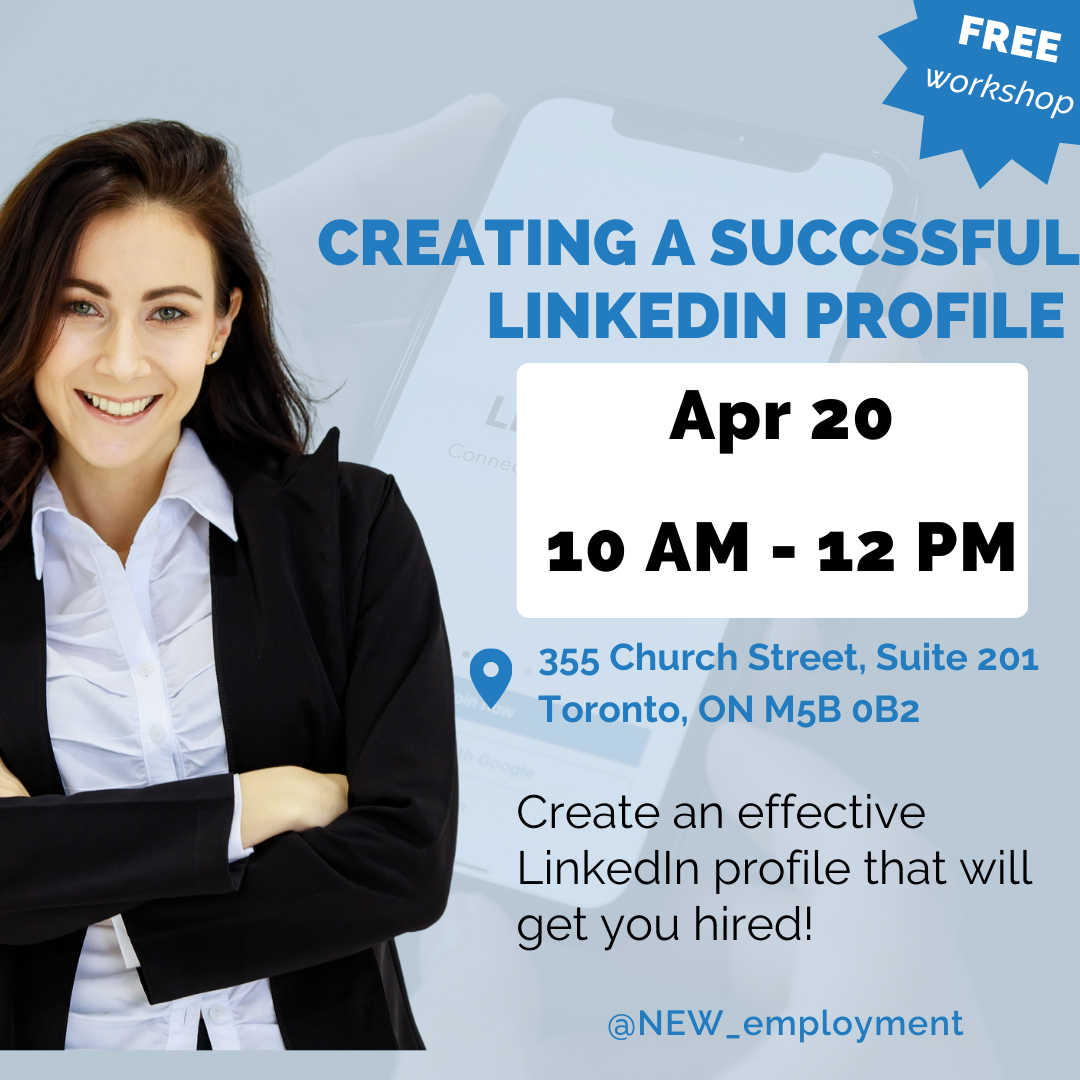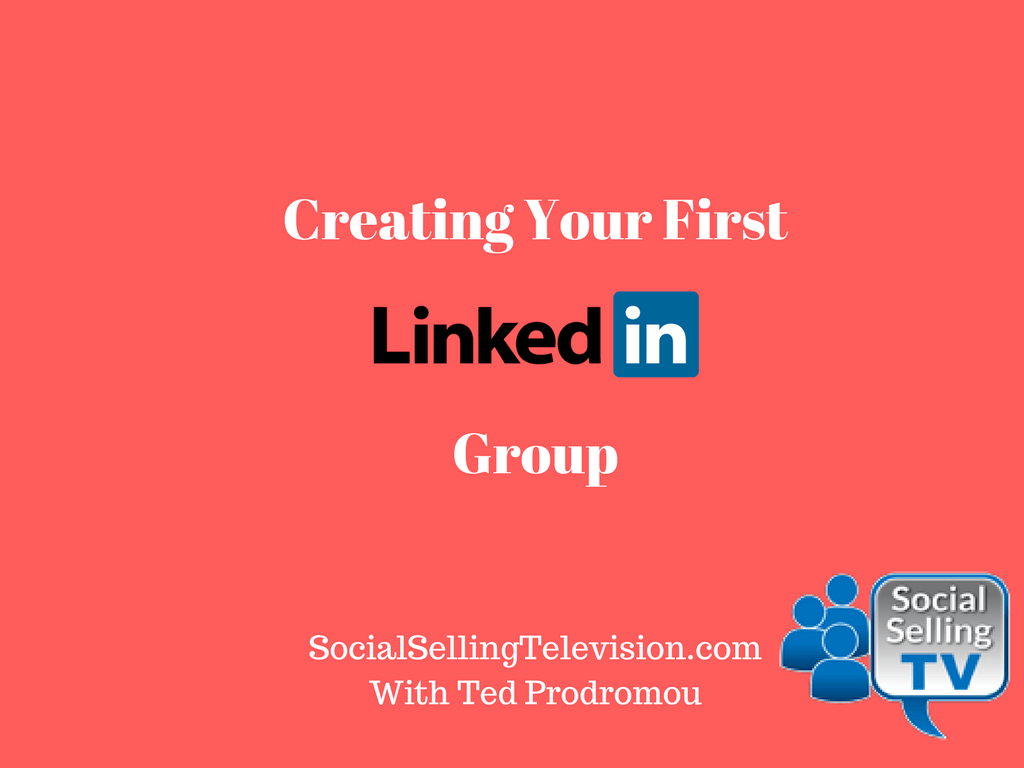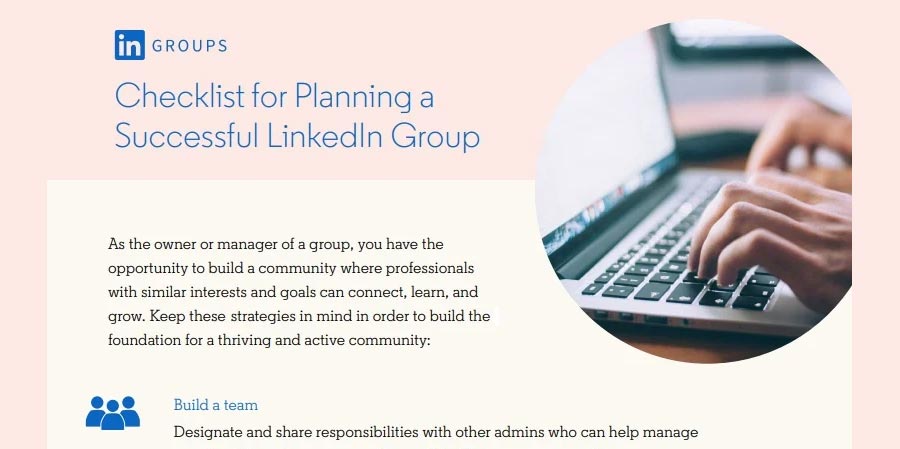Welcome to your comprehensive guide on starting a successful LinkedIn group! In today’s digital landscape, networking is more important than ever, and LinkedIn offers the perfect platform for professionals to connect, share insights, and foster collaboration. But did you know that creating a
Benefits of Creating a LinkedIn Group

Creating a LinkedIn group has numerous advantages, not only for you as a leader but for the members of the group as well. Let’s explore some fantastic benefits of starting your own group:
- Establish Authority: By leading a group, you position yourself as an expert in your field. Sharing valuable content, facilitating discussions, and answering questions will build your credibility over time.
- Network Expansion: Groups provide a unique opportunity to connect with like-minded professionals who share your interests and goals. This can lead to new partnerships, collaborations, and even job opportunities.
- Targeted Audience: Unlike general social media platforms, LinkedIn groups attract users specifically interested in certain topics or industries. This allows you to connect with individuals who are genuinely engaged and pertinent to your professional goals.
- Content Sharing: A group allows for easy sharing of content relevant to your niche. This could be articles, videos, or even your own blog posts. Members can discuss topics that matter to them, fostering a culture of learning and sharing.
- Enhanced Engagement: LinkedIn groups encourage conversations. Members can ask questions and seek advice, promoting a sense of community. Engaging in this way can help you build long-lasting relationships.
- Feedback and Insights: A group is a fantastic space to gather feedback on your ideas or projects. Members can provide insights, helping you refine your work or explore new directions.
- Promotion of Your Services: While promoting your services should be done tastefully, a group allows you to subtly showcase your skills, products, or services. When members recognize your expertise, they may reach out for personal services.
In essence, a LinkedIn group is not just a platform; it’s a community-building tool that can yield impressive results for both personal and professional growth. Whether you’re looking to foster collaboration, share knowledge, or simply connect with professionals in your industry, building a successful LinkedIn group is a step worth taking. So, let’s buckle up and explore how you can set up your very own group and watch it flourish!
Also Read This: How Often to Post on LinkedIn for Maximum Engagement
3. Steps to Start Your LinkedIn Group

Starting a LinkedIn group might sound intimidating, but it’s quite straightforward! Here’s a clear step-by-step guide to help you launch your very own group:
- Define Your Purpose: Before you start, ask yourself: why do you want to create this group? Is it to share knowledge, network, or foster discussions in your industry? Having a clear purpose will guide all your decisions.
- Log into LinkedIn: Of course, to create a group, you must have a LinkedIn account. If you don’t have one yet, it’s time to set that up!
- Create a Group: Head over to the LinkedIn homepage. Click on the ‘Work’ icon in the upper right corner and select ‘Groups’. There, you’ll find the option to ‘Create a group’. Click it!
- Fill Out Group Details: This is where it gets exciting. Give your group a catchy name that reflects its purpose. Write a compelling description that outlines what members can expect. Make sure to include relevant keywords to enhance discoverability!
- Set Group Rules: Establish clear guidelines for behavior and engagement within the group. This helps maintain a positive and respectful atmosphere. You’ll want to outline what is allowed and what isn’t—be as specific as possible!
- Select Privacy Settings: Decide whether your group will be public (anyone can join) or private (members must be approved). Each option has its pros and cons, so consider what suits your goals best.
- Customize Your Group: Add a logo or cover image that represents your group. A professional-looking group will attract members and make them feel more invested.
- Invite Members: Start by inviting your connections. You can also promote your group on your profile, through posts, and other social media channels to gain traction.
- Engagement! The work doesn’t stop once you’ve created the group. Regularly post content, ask questions, and encourage discussions to keep members engaged. The more active the group, the more valuable it will become.
Following these steps will set you on the path to creating a vibrant and successful LinkedIn group. Remember, it’s about building a community where everyone feels valued and heard!
Also Read This: What to Write to a Recruiter on LinkedIn After Applying for a Job
4. Choosing the Right Niche and Target Audience

Identifying your niche and target audience is critical to the success of your LinkedIn group. A well-defined audience helps you tailor your content and discussions to their interests, increasing engagement and value. Here’s how to do it:
1. Evaluate Your Passion and Expertise: Start by reflecting on what you’re passionate about and where your expertise lies. A group leads by someone who is genuinely interested and knowledgeable about the topic tends to attract like-minded individuals.
2. Research Existing Groups: Look at existing groups within your area of interest. What topics are being covered? What gaps can you fill? This research will help you identify a unique angle for your group.
3. Define Your Niche: Narrow down your focus to a specific niche. For example, instead of creating a general marketing group, consider something like "Digital Marketing for Small Business Owners.” The more specific you are, the easier it will be to attract members who resonate with that niche.
4. Profile Your Audience: Create a persona of your ideal member. Consider their industry, job title, challenges, and goals. Ask yourself:
- What problems can my group help solve?
- What are their interests and preferences?
- What kind of content would appeal to them?
5. Test and Adjust: Once your group is running, keep an eye on member demographics and engagement levels. Use LinkedIn's insights to understand your audience better and adjust your focus or content strategy as needed.
By choosing the right niche and targeting the appropriate audience, you'll not only create a thriving LinkedIn group but also establish yourself as a thought leader in your chosen field. Happy grouping!
Also Read This: How to Update LinkedIn Profile: A Guide to Keeping Your Profile Current and Optimized
5. Setting Up Your LinkedIn Group Effectively
When you're ready to create your LinkedIn group, the first step is to dive into the group settings mindfully. Proper configuration can set you on the path to success right from the start. Here’s what you need to keep in mind:
- Group Name: Choose a catchy and descriptive name that reflects the group’s purpose. Make it engaging and relevant, so it attracts the right members.
- Description: Write a clear and concise description. This should explain the group's objectives, the topics to be discussed, and what members can expect. Be sure to incorporate relevant keywords to help people find your group through LinkedIn’s search.
- Group Type: Decide whether your group will be open, closed, or secret. An open group is visible to anyone, a closed group requires admin approval, and a secret group can only be seen by the members. Choose wisely based on your goals.
- Group Rules: Establish group rules and guidelines to foster a positive community environment. This could include rules about self-promotion, spam, and acceptable topics of discussion. Clear boundaries help maintain engagement and the purpose of your group.
- Visual Appeal: Upload a professional cover photo that resonates with the group’s theme. This small detail can make your group look more credible and inviting.
After configuring your group, it's time to start posting content. Kick things off with some introductory posts that outline your vision for the group. Encourage discussions by asking open-ended questions and inviting members to share their insights.
Don’t forget the importance of consistent engagement. As the group owner, your presence is vital. Regularly check in, respond to comments, and acknowledge members who contribute meaningfully. This sets a positive tone and encourages others to be active as well.
Also Read This: What Do the Green Dots on LinkedIn Mean? Understanding Activity Indicators
6. Promoting Your LinkedIn Group
Now that your LinkedIn group is set up beautifully, it’s time to spread the word! Promotion plays a crucial role in attracting members who are genuinely interested in your group's themes. Here are some effective strategies for promoting your LinkedIn group:
- Leverage Your Existing Network: Start by inviting your LinkedIn connections to join. You can send personalized invitations explaining what they can gain from joining. Make it feel special and personal!
- Utilize Content Marketing: Create related content on LinkedIn—like articles, posts, or even videos—highlighting discussions that will occur in your group. Share these across social media platforms, and encourage engagement with a call to action inviting readers to join your group.
- Engage with Other Groups: Participate in other relevant LinkedIn groups without spamming. Share your expertise and allow members to see your profile. If you’ve done this well, naturally, they will be curious and want to see what your group is about.
- Host Events or Webinars: Consider hosting events or webinars related to your group’s niche. Promote these events and use them as a platform to invite attendees to join your group for further discussions.
- Content Collaboration: Collaborate with thought leaders or relevant figures in your industry. You can co-create content or ask them to promote your group to their audience, which could help attract a new wave of members.
Promoting your LinkedIn group doesn’t have to be a solo journey. Engage your current members, encourage them to invite others, and create a community that thrives on shared interests and welcoming spirit. Remember, the ultimate goal is to create a valuable resource for everyone involved!
Also Read This: What is a Good CTR for LinkedIn Ads? Tips for Better Campaigns
7. Engaging and Growing Your Group Community
Once you've set up your LinkedIn group, the real work begins: engaging and growing your community. It’s not enough to simply create the group; you need to cultivate a vibrant environment where members feel welcomed, valued, and motivated to participate. Here are some effective strategies to help you achieve this:
- Regular Content Updates: Share valuable content consistently. This can include articles, questions, polls, or even inspiring quotes relevant to your group's focus. Regular posting keeps the conversation alive and members engaged.
- Encourage Member Participation: Ask open-ended questions and solicit feedback from your members. Show them that their opinions matter by responding to their comments and promoting discussions.
- Highlight Member Achievements: Celebrate the successes of your members! Feature their achievements, projects, or milestones. This not only motivates individual members but also reinforces a sense of community.
- Host Live Q&A Sessions: Consider organizing live sessions where members can ask questions or engage with experts in your group’s niche. This can greatly increase engagement and provide value to your members.
- Utilize Multimedia: Don’t just stick to text posts. Incorporate images, videos, and infographics to make your content more visually appealing and break the monotony. Multimedia can spark more interest than text alone.
Additionally, think about organizing networking events or virtual meetups. These can be fantastic opportunities for members to connect with each other, share experiences, and brainstorm ideas together. Building a community isn't just about online engagement; fostering real-world relationships can enhance member connections and loyalty.
Finally, be transparent and approachable. When members feel like they can reach out with questions or suggestions, they’re more likely to stay active in the group. Remember, it’s all about nurturing that community spirit!
Also Read This: Should You Verify Your LinkedIn Profile? Why It Matters for Professionals
8. Best Practices for Managing Your LinkedIn Group
Managing a LinkedIn group requires organization, consistency, and a bit of finesse. Here are some best practices that will help you effectively manage your group while keeping the atmosphere positive and productive:
| Best Practice | Description |
|---|---|
| Set Clear Rules: | Establish group rules and guidelines that outline what is acceptable behavior and what is not. Make these rules readily accessible to all members. |
| Moderate Discussions: | Keep an eye on discussions to ensure they remain on topic and respectful. Address any inappropriate comments or spam quickly to maintain a positive environment. |
| Encourage New Members: | Send welcome messages to new members, introducing them to the group’s purpose and encouraging them to introduce themselves. This fosters a warm and inclusive atmosphere. |
| Regular Group Analytics: | Monitor group activities using LinkedIn’s analytics tools. Pay attention to what types of posts generate the most engagement and adapt your strategy accordingly. |
| Create Thematic Days: | Designate specific days for particular themes, such as “Motivation Mondays” or “Feedback Fridays.” This adds structure and gives members something to look forward to. |
Remember, it's essential to be adaptable. What works well today might not work tomorrow, so be ready to test new ideas and revise your strategies. Listen to your members and seek their feedback; they are your best source of information on what will keep them engaged.
In the end, managing a LinkedIn group is all about building relationships and creating a supportive community. If you prioritize the needs and interests of your group members, you'll see your group thrive!
Conclusion and Next Steps
Starting a LinkedIn group can be a powerful way to foster community, share knowledge, and strengthen professional networks. As you embark on this journey, keep the following key points in mind:
- Define Your Purpose: Ensure that your group's mission is clear from the outset.
- Engagement is Key: Consistently engage with members through regular posts, discussions, and feedback opportunities.
- Promote Responsibly: Use social media, email newsletters, and your personal network to attract members, but avoid spamming.
- Moderate Effectively: Create rules for engagement to maintain a respectful and productive environment.
- Analyze and Adapt: Use LinkedIn’s analytics tools to track group growth and member engagement, and be ready to adjust your strategy accordingly.
As you progress with your LinkedIn group, consider the following next steps:
- Set up an initial content calendar to plan out your posts and discussions for the first few months.
- Identify and recruit potential co-moderators to help you manage the community.
- Establish guidelines to foster a healthy and engaging environment.
- Encourage members to invite like-minded professionals to join the group.
- Regularly evaluate the group's objectives and adjust your approach based on member feedback.
In conclusion, building a successful LinkedIn group requires patience, dedication, and adaptability. By staying focused on your group's mission and actively engaging with your members, you can create a vibrant community that offers valuable insights and connections. Start implementing these strategies today, and watch your group flourish!
 admin
admin








